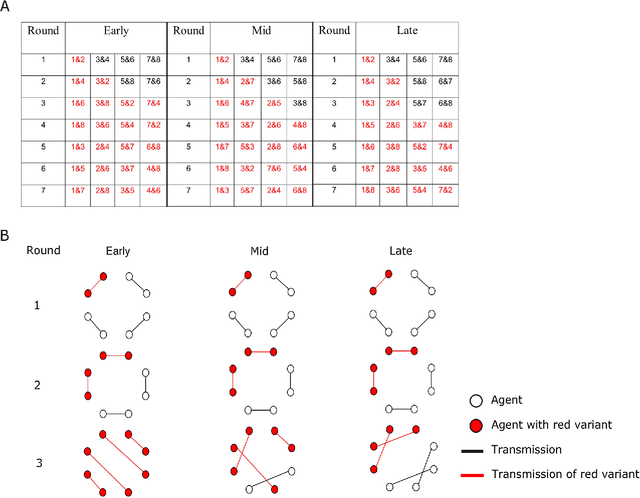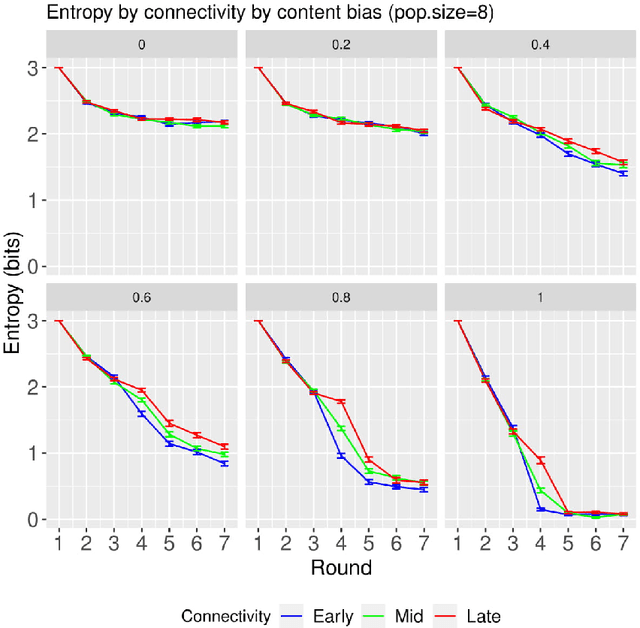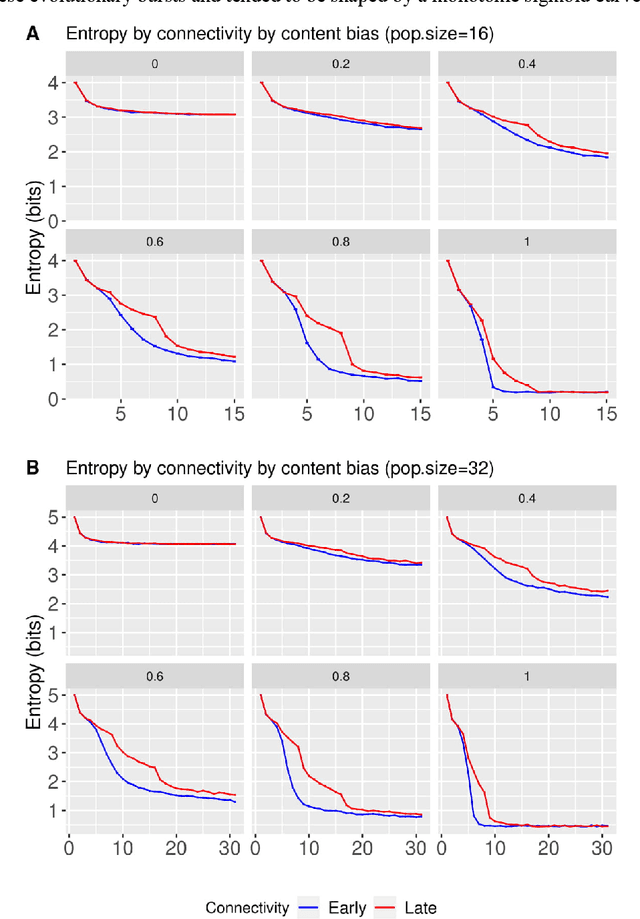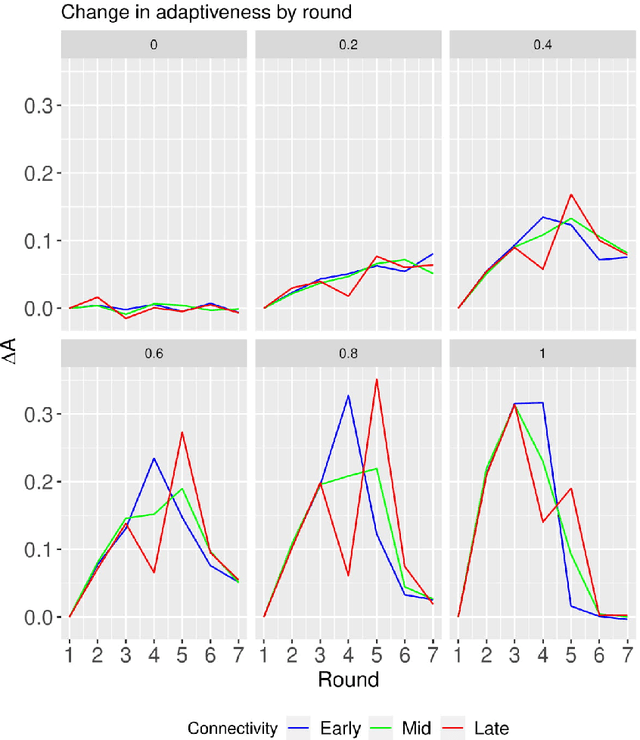Monica Tamariz
Network connectivity dynamics affect the evolution of culturally transmitted variants
Feb 09, 2019



Abstract:The distribution of cultural variants in a population is shaped by both neutral evolutionary dynamics and by selection pressures, which include several individual cognitive biases, demographic factors and social network structures. The temporal dynamics of social network connectivity, i.e. the order in which individuals in a population interact with each other, has been largely unexplored. In this paper we investigate how, in a fully connected social network, connectivity dynamics, alone and in interaction with different cognitive biases, affect the evolution of cultural variants. Using agent-based computer simulations, we manipulate population connectivity dynamics (early, middle and late full-population connectivity); content bias, or a preference for high-quality variants; coordination bias, or whether agents tend to use self-produced variants (egocentric bias), or to switch to variants observed in others (allocentric bias); and memory size, or the number of items that agents can store in their memory. We show that connectivity dynamics affect the time-course of variant spread, with lower connectivity slowing down convergence of the population onto a single cultural variant. We also show that, compared to a neutral evolutionary model, content bias accelerates convergence and amplifies the effects of connectivity dynamics, whilst larger memory size and coordination bias, especially egocentric bias, slow down convergence. Furthermore, connectivity dynamics affect the frequency of high quality variants (adaptiveness), with late connectivity populations showing bursts of rapid change in adaptiveness followed by periods of relatively slower change, and early connectivity populations following a single-peak evolutionary dynamic. In this way, we provide for the first time a direct connection between the order of agents' interactions and punctuational evolution.
Human Communication Systems Evolve by Cultural Selection
Jun 29, 2014

Abstract:Human communication systems, such as language, evolve culturally; their components undergo reproduction and variation. However, a role for selection in cultural evolutionary dynamics is less clear. Often neutral evolution (also known as 'drift') models, are used to explain the evolution of human communication systems, and cultural evolution more generally. Under this account, cultural change is unbiased: for instance, vocabulary, baby names and pottery designs have been found to spread through random copying. While drift is the null hypothesis for models of cultural evolution it does not always adequately explain empirical results. Alternative models include cultural selection, which assumes variant adoption is biased. Theoretical models of human communication argue that during conversation interlocutors are biased to adopt the same labels and other aspects of linguistic representation (including prosody and syntax). This basic alignment mechanism has been extended by computer simulation to account for the emergence of linguistic conventions. When agents are biased to match the linguistic behavior of their interlocutor, a single variant can propagate across an entire population of interacting computer agents. This behavior-matching account operates at the level of the individual. We call it the Conformity-biased model. Under a different selection account, called content-biased selection, functional selection or replicator selection, variant adoption depends upon the intrinsic value of the particular variant (e.g., ease of learning or use). This second alternative account operates at the level of the cultural variant. Following Boyd and Richerson we call it the Content-biased model. The present paper tests the drift model and the two biased selection models' ability to explain the spread of communicative signal variants in an experimental micro-society.
 Add to Chrome
Add to Chrome Add to Firefox
Add to Firefox Add to Edge
Add to Edge